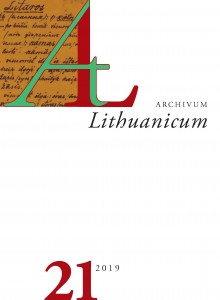Katekizmo pokyčiai XVIII ‒XIX a. pradžios lietuviškoje kalvinistų raštijoje
Changes in Catechism in Lithuanian Calvinist writing of the 18th century and the beginning of the 19th century
Author(s): Birutė KabašinskaitėSubject(s): Christian Theology and Religion, Lithuanian Literature, 18th Century, 19th Century, Translation Studies
Published by: Lietuvių Kalbos Institutas
Keywords: Catechism in Lithuania; Calvinist writings; 18th-19th century; Seanas Katechizmas;
Summary/Abstract: At the beginning of the 19th century (probably, also in the 18th century), in Calvinist writing greater attention started to be paid to the needs of the addressee – they dared to deviate more from the Polish tradition, and translations solely very closely related to the Polish source were no longer prepared. This is demonstrated by the results of the studies of Seanas Katechizmas (hereinafter referred to as SK). 1. The Calvinist work Seanas Katechizmas (1803), which was prepared for the press by Mykolas Cerauskas, is not homogeneous. The quotes from the Bible, hymns and prayers (except one), with minimal amendments, were taken from the catechism and primer Pradžios pamokslas (hereinafter referred to as PP) of 1680, from which the alphabet and examples of syllables as well as numbers were also taken. SK’s foreword and one prayer (“Małda Rita untra” SK 29–30) were prepared by Mykolas Cerauskas himself, which is evidenced by his other work, Kozonis padekawonies, coinciding features of spelling and language of the texts. 2. The main text, catechism (i.e. teaching the truths of faith), is of a slightly different spelling, language, and content than the texts of PP and those prepared by Cerauskas. Therefore, it was not prepared by Cerauskas. However, similarly to Cerauskas, the anonymous author was from the area of eastern Aukštaičiai (probably, Panevėžys) area (as demonstrated by part of the phonetic features, including reduced verb forms), but from a dialect that is rather farther to the west (this is reflected by some of the nasal reflexes). Unlike Cerauskas, the author managed to better overcome the peculiarities of his native dialect and to adhere to the norms of the middle variant (however, it is also true that more accurate spelling tradition, <ea> writing and other, were not taken over).
Journal: Archivum Lithuanicum
- Issue Year: 2019
- Issue No: 21
- Page Range: 147-164
- Page Count: 18
- Language: Lithuanian

